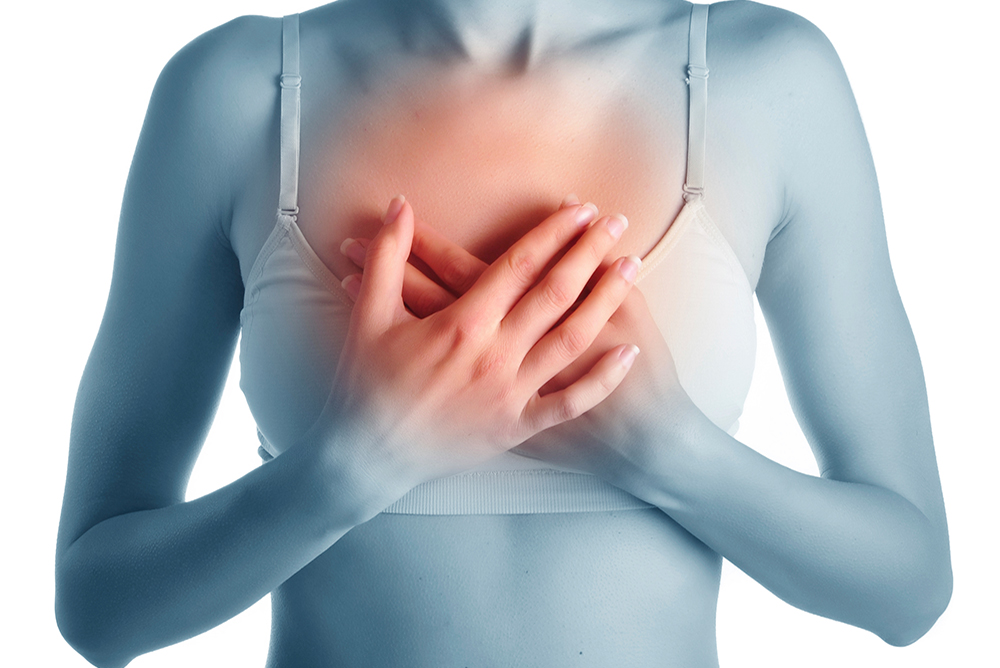
iStock
By Mary Carpenter
“MAMMO + HEART AI” reads a large poster on the wall of DMV-based Washington Radiology, where the check-in staff suggested adding this AI screening for a self-pay of $120. (3-D mammography, a previously suggested self-pay add-on, was no longer on offer.) A different add-on, a BAC (breast artery calcification) evaluation, involves visual assessment of mammograms for the presence and severity of BAC.
But while BAC scans may provide clues to heart health, the evaluation may be less useful than the better established screening of the coronary arteries responsible for supplying blood to the heart. Scanning coronary arteries for calcium (CAC screening) can show calcium deposits that are narrowing these important arteries even in people with good scores on other heart health indicators.
Heart-risk calculators, for example, tally responses to lifestyle questions, such as smoking, along with data that include cholesterol levels. But the calculators often fail to add relevant variables, such as family history, diet, exercise and ability to control stress—giving results that are too high or low for some patients.
Also considered an indicator of good heart health, cholesterol “ratios” provide comparisons of worrisome LDL (low-density lipoprotein) cholesterol levels with those of HDL (high-density lipoprotein) that has been considered healthier. Reliance on cholesterol ratios, however, is unproven and may be unreliable. According to the Mayo Clinic,“For predicting your risk of heart disease, many doctors now believe that determining your non-HDL cholesterol level may be more useful” than the ratio. (Obtained by subtracting the HDL number from that of total cholesterol, the non-HDL level should be below 130 mg/dL.)
What can also interfere with heart health is that most patients are unaware of their personal risks or of what symptoms might look like if they occur. For AFib (DEF) for example, few people know about the condition, and its symptoms can be silent. Even when knowledgable individuals feel their hearts speed up, they can be unsure whether to push unwilling doctors for more tests—despite AFib officially affecting some 10% of people over age 65, a number that could be much higher because of unreported or silent symptoms.
BAC screening helped identify heart risk over a 10-year period in a Dartmouth study of 1216 women, ages 40 to 75, who started the study with no cardiovascular disease. However, researchers in Edinburgh recently concluded that “the diagnostic accuracy [of BAC] to identify patients with coronary artery disease or obstructive coronary artery disease is poor.”
On the other hand, a CAC scan “is the finest way for those who are uncertain about their heart disease risk to make better decisions about treatment and medications,” according to Johns Hopkins heart disease prevention researcher Michael Blaha. Although Hopkins studies began documenting its usefulness in 2011, the CAC scan still has not made it onto many guidelines; most patients must first request a referral from their doctor and then pay for the test themselves, which usually costs between $40 and $150.
But physicians continue to argue about their usefulness. Calcium scans of coronary arteries are “very useful if there’s uncertainty about a person’s risk of heart disease or the need for statins,” Brigham and Women’s Hospital cardiologist Ron Blankstein told Harvard Health—but not for anyone who already has coronary artery disease or has a low risk of heart disease, which includes most people under 40. Said Blankstein, good candidates come from the “immediate-risk group…people ages 40 to 75 whose 10-year risk of heart disease or stroke ranges from 7.5% to 20%.”
As for 3D mammography, it is “a standard of care for breast cancer screening,” according to Breast Cancer.org. “A number of studies have found that 3D mammograms find more cancers than traditional 2D mammograms and also reduce the number of false positives.” Yet 3D mammography is unavailable in many screening facilities and not covered by all insurance plans.
“All of our Hopkins sites offer 3D mammography, which gives us much more information because it lets us see the layers of cells, one millimeter at a time,” according to the Johns Hopkins website. But the site also notes that “guidelines do not include recommendations for women after age 74, as there is limited data on whether mammograms save lives in that age group.”
At my recent annual mammography appointment, I said no thanks to the BAC add-on. (A recent CAC scan had given me a healthy score.) 3D mammography was not on offer, nor was it mentioned in my report of negative mammogram results—despite the statement that my “extremely dense” breast tissue “can make it harder to find cancer on a mammogram and may also be associated with an increased risk of cancer.” On the other hand, the same letter referred to a “breast cancer risk assessment analysis,” which I had completed, that put my lifetime risk of developing breast cancer at 6.4%. I will not be returning to Washington Radiology—for at least another year.
—Mary Carpenter regularly reports on topical subjects in health and medicine.
